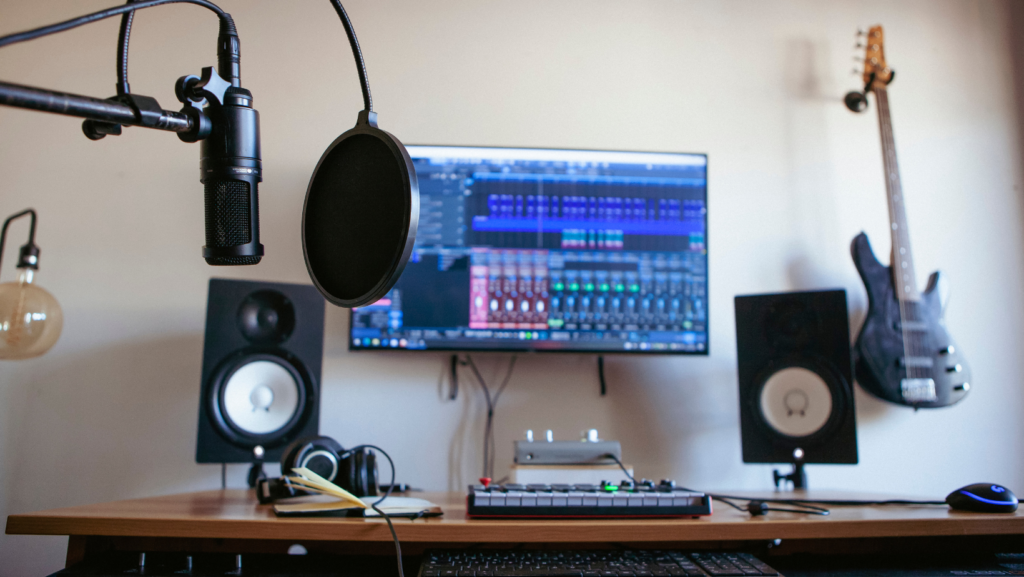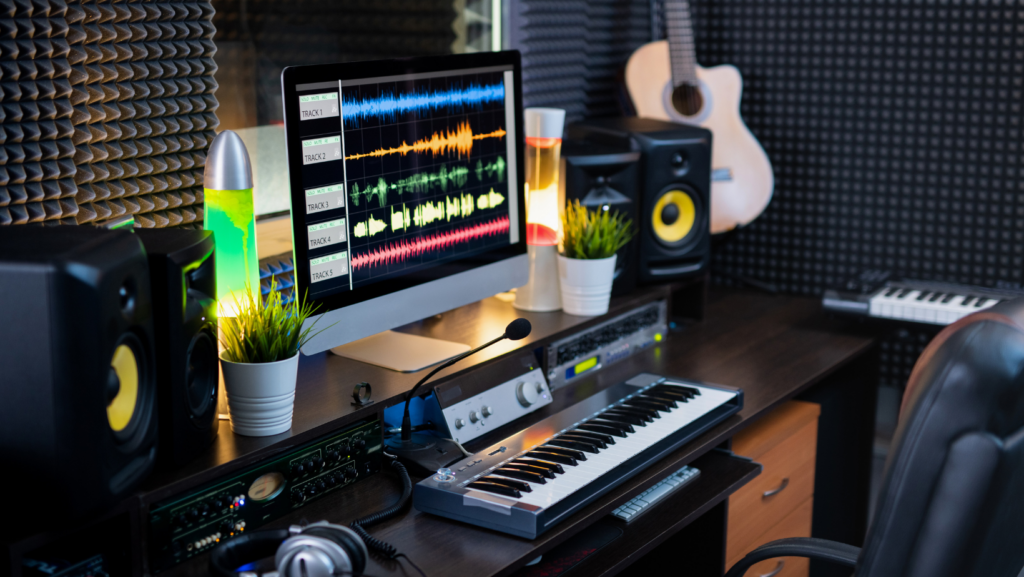Stepping into the world of recording can be a thrilling yet daunting journey for guitarists. With the right equipment, you can capture your unique sound and share it with the world. Whether you’re a seasoned pro or just starting out, having a solid understanding of the tools at your disposal is crucial.
In this article, we’ll delve into the essentials of recording equipment for guitar. From microphones to audio interfaces, we’ll provide you with the knowledge you need to make informed decisions. So, buckle up and prepare to embark on an exciting journey into the world of guitar recording.
Recording Equipment for Guitar
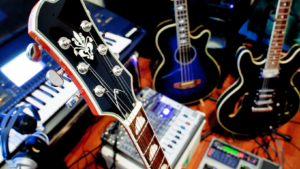
This section provides an in-depth examination of the recording equipment for guitar, breaking down the key components and their individual roles in achieving high-quality recordings.
Quality recording equipment holds a significant place in guitar recording endeavors. It elevates the overall sound quality, enhancing the sonic attributes of the guitar performance. Poor quality equipment, on the other hand, can negatively impact the output, rendering the nuances of the guitar tone less distinguishable. For example, a low-grade microphone may falter in capturing the full range of frequencies produced by a guitar, while a high-quality one can reproduce the nuances and dynamics accurately.
Types of Microphones for Guitar Recording
Diversity marks the landscape of microphones available for guitar recording, and understanding their distinct characteristics is fundamental. This section delivers a deep dive into three types of microphones primarily used in recordings: dynamic, condenser, and ribbon mics.
Dynamic Microphones
Dynamic microphones are the embodiment of durability, consistently delivering in high-pressure sound environments. They use a simple design principle, converting sound waves into an electrical signal through the motion of a coil in a magnetic field. Typical examples include the Shure SM57 and the Sennheiser MD421. With their robustness and capacity to handle high sound pressure levels without distortion, dynamic mics find their niche in live performances and in capturing loud guitar amplifiers.
Condenser Microphones
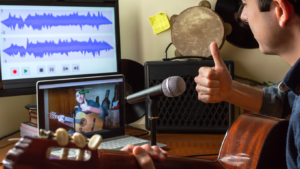
Condenser microphones, although delicate, offer exceptional sensitivity and accuracy. They function using an electrically-charged diaphragm placed close to a metal backplate, effectively forming a capacitor. Sound pressure causes the diaphragm to vibrate, changing the distance between it and the backplate, which in turn alters the capacitance and produces the electrical signal. Prime examples are the AKG C414 and the Neumann U87.
Ribbon Microphones
Ribbon microphones offer the soul of vintage sound in a modern package. They operate by suspending a thin metal ribbon in a magnetic field; as the ribbon vibrates with the incoming sound, it generates an electric signal. Classic models include Royer R-121 and AEA R84. Renowned for their natural tone, ability to capture high frequencies without harshness, and bidirectional pickup pattern, ribbon microphones fit perfectly in scenarios that require capturing the ambience around a guitar or a full-bodied guitar sound.
Tips to Improve Guitar Recording Quality
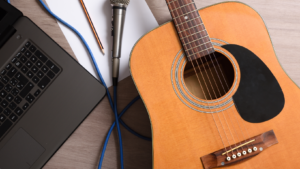
Having the right equipment and knowing how to use it, indeed paves the way toward high-quality recording equipment for guitar. But, maximizing this quality also involves attention to the recording environment, how the guitar tracks are layered, and the post-processing fine-tuning.
Treating the room acoustically can significantly influence the recorded guitar sound. It absorbs unwanted echoes and reduces noise. Auralex and Primacoustic offer top-notch acoustic panels for this purpose. They’ve helped many musicians minimize sound reflections, producing clean and dry recordings.
Layering guitars, essentially recording the same part several times, can create a richer and more dimensional sound. The Beatles’ “A Hard Day’s Night” or Radiohead’s “Paranoid Android” exemplify such layering in their multi-track H4N Pro Handy Recorder works seamlessly for this.
Post-processing—seeing the finishing touches brought on by EQ and compression—can drive the recorded audio’s final quality home. It’s not simply about making the tracks louder. It’s about finessing those tracks, allowing the guitar’s natural tones to shine through.
A Digital Audio Workstation (DAW) with satisfactory EQing and compressing capabilities, like Pro-Tools or Ableton Live, can do this. EQing helps to adjust the guitar’s frequency, pleasingly highlighting the instrument’s specific frequencies while taming less desirable ones. Boasting powerful EQ plugins, FabFilter Pro-Q3 stands out in this field.

